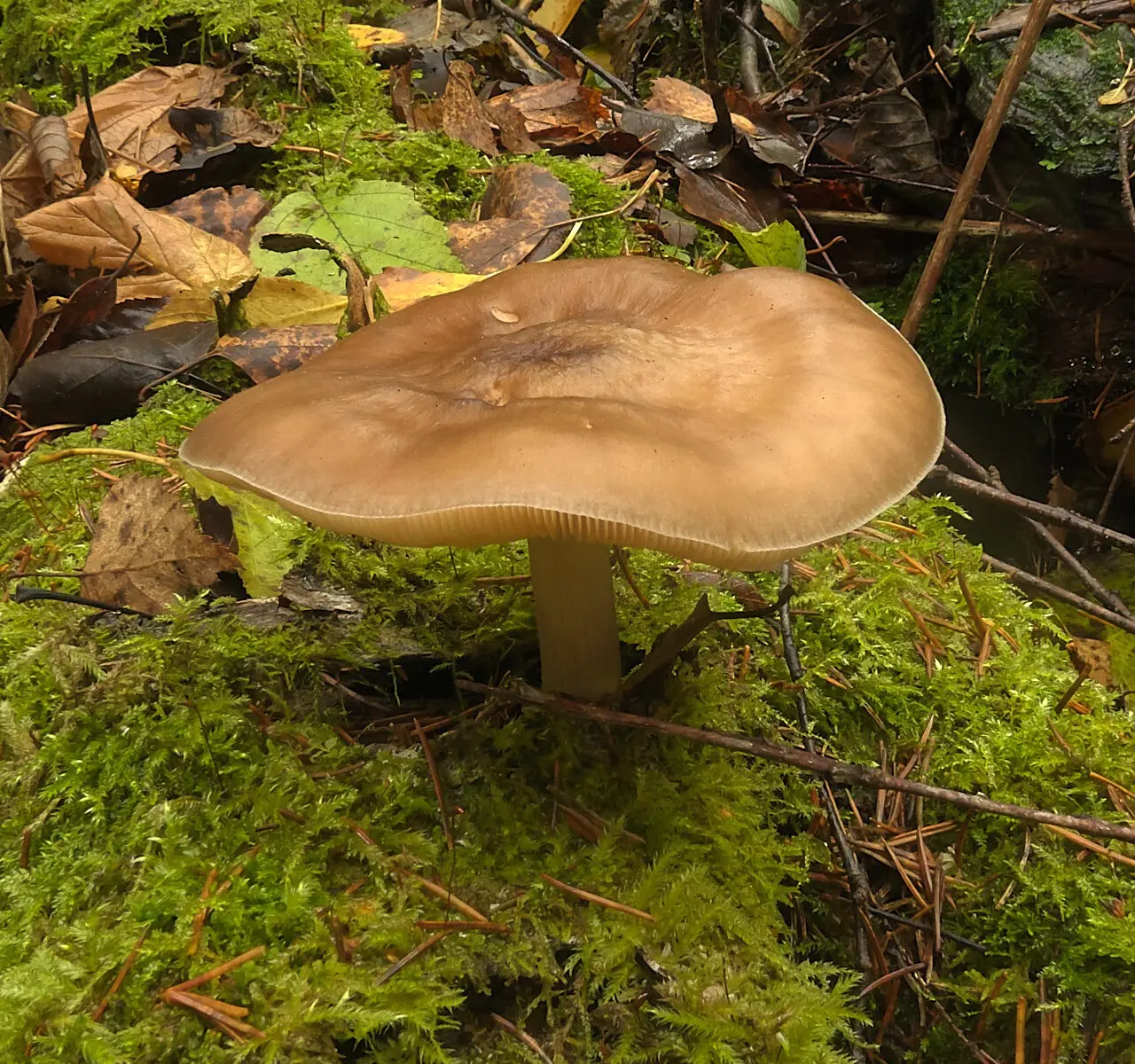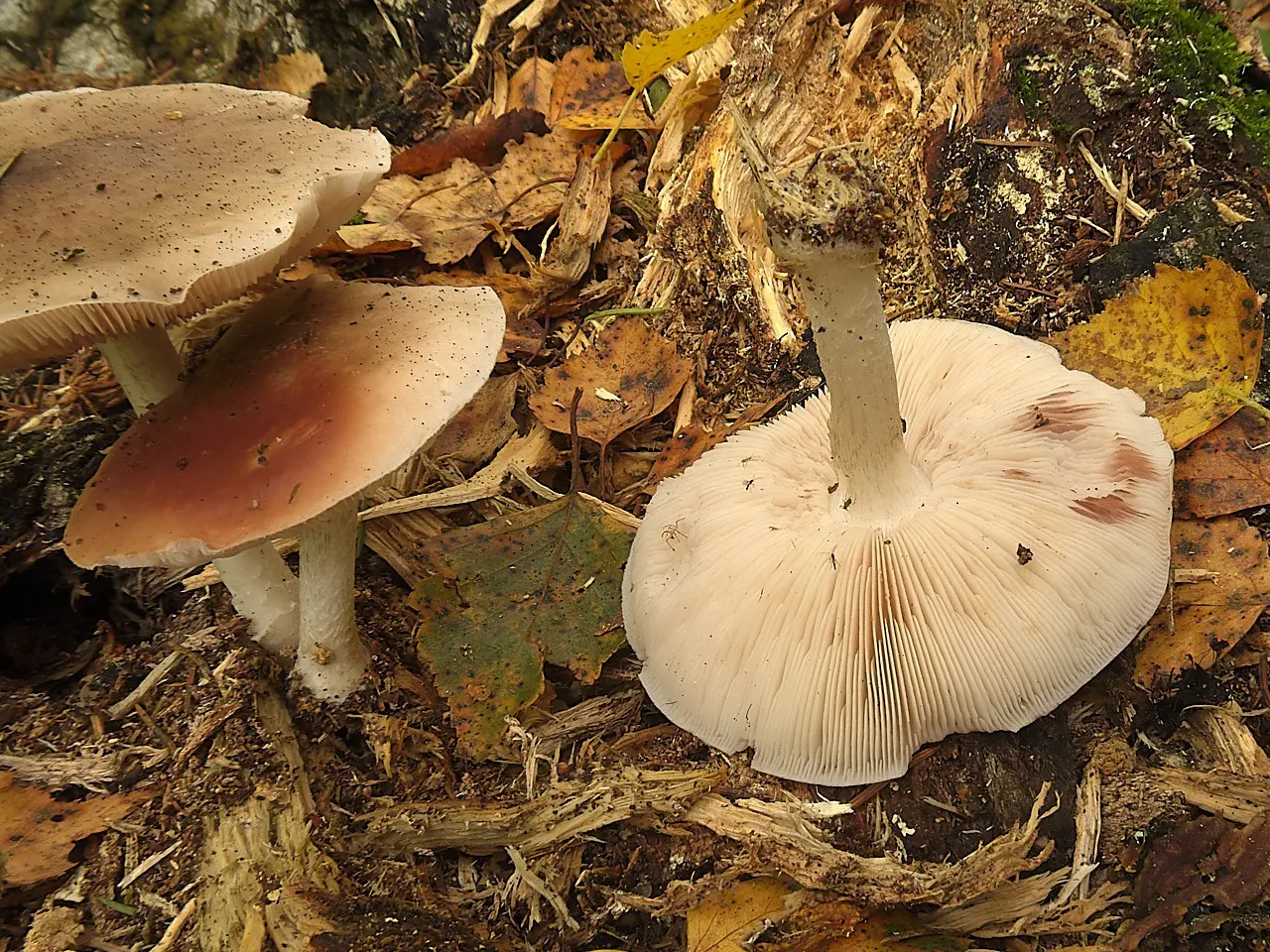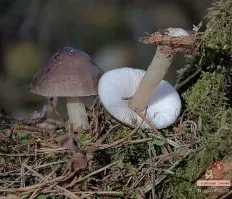Pluteus Hongoi (Pluteus hongoi)
- Division: Basidiomycota (Basidiomycetes)
- Subdivision: Agaricomycotina (Agaricomycetes)
- Class: Agaricomycetes (Agaricomycetes)
- Subclass: Agaricomycetidae (Agaricomycetes)
- Order: Agaricales (Agaric or Lamellar)
- Family: Pluteaceae (Pluteaceae)
- Genus: Pluteus (Pluteus)
- Type: Pluteus hongoi (Pluteus Hongo)
:
- Pluteus major Singer
- Pluteus albineus Bonnard
- Pluteus nothopellitus Justo & ML Castro

Current title: Pluteus hongoi Singer, Fieldiana Botany 21:95 (1989)
head: 2,5-9 (up to 10-11) cm in diameter, at first hemispherical or bell-shaped, then convex, broadly convex, sometimes with a wide and low irregular tubercle in the center. With age, it unfolds to almost flat, may be slightly depressed in the center. The skin in dry weather is dry, smooth, matte or with a slight glossy sheen, with high humidity it is viscous to the touch. Smooth or radially fibrous, often with well-defined, non-protruding (ingrown) darker scales in the center.
Color from brown, brownish, pale brown, to beige-gray, off-white.
The edge of the cap is thin, maybe with slightly translucent veins
plates: free, very frequent, wide, up to 10 mm wide, convex. When young, white or beige-gray, then pinkish, pinkish-brown, dirty pink.
The edge of the plates may be smooth, may be with whitish torn flakes.

Leg: 3,5-11 cm high and 0,3-1,5 cm thick, cylindrical, slightly broadened at the base. Generally smooth or scaly white, covered with thin whitish flakes, rarely entirely with brown or grey-brown longitudinal fibers, but more often fibrous only at the base. Whitish, sometimes yellowish at the base.
Pulp: white in the cap and stem, loose, brittle.
Smell and taste. The smell is often described as “raphanoid” (rare crops) or raw potato, rarely fuzzy, sometimes described as “very faint fungal”. The taste is slightly rare or earthy, sometimes soft, with a bitter aftertaste.
spore powder: reddish brown
Microscopy:



The Hongo goose usually grows on well-decayed angiosperm wood (eg maple, birch, beech, oak). It can grow on the humus layer without visible connection with wood. In temperate or transitional boreal/temperate forests.
June – November, less often, in warm regions, it can bear fruit from February – May.
Eurasia: Distributed from Spain to the Far East and Japan.
North America: Distributed in eastern North America, from Florida to Massachusetts and west to Wisconsin. There are no confirmed finds from western North America.
It is difficult to say exactly how common this species is and whether it is often found, since it is very often identified as a “small deer whip”.
The Hongo scourge is considered an edible mushroom, as is the deer scourge. Rare smell and taste completely disappear after cooking.
The Hongo scourge is very similar to the Deer and similar scourges with hats in brownish-grayish tones.

Deer whip (Pluteus cervinus)
In its most typical form, Pluteus hongoi can be separated from P. cervinus, with which it overlaps seasonally and in distribution, by the following macrofeatures: a pale cap and stalk usually without distinct longitudinal fibrils or scales. The rest is only microscopy: hooks on a bivalve pleurocystidia, cheilocystidia that do not form a well-developed continuous strip along the edge of the plate. All these characters are very diverse and are not necessarily found simultaneously in all collections; therefore, there are specimens of P. hongoi that are morphologically indistinguishable from P. cervinus.
Photo: Sergey.









